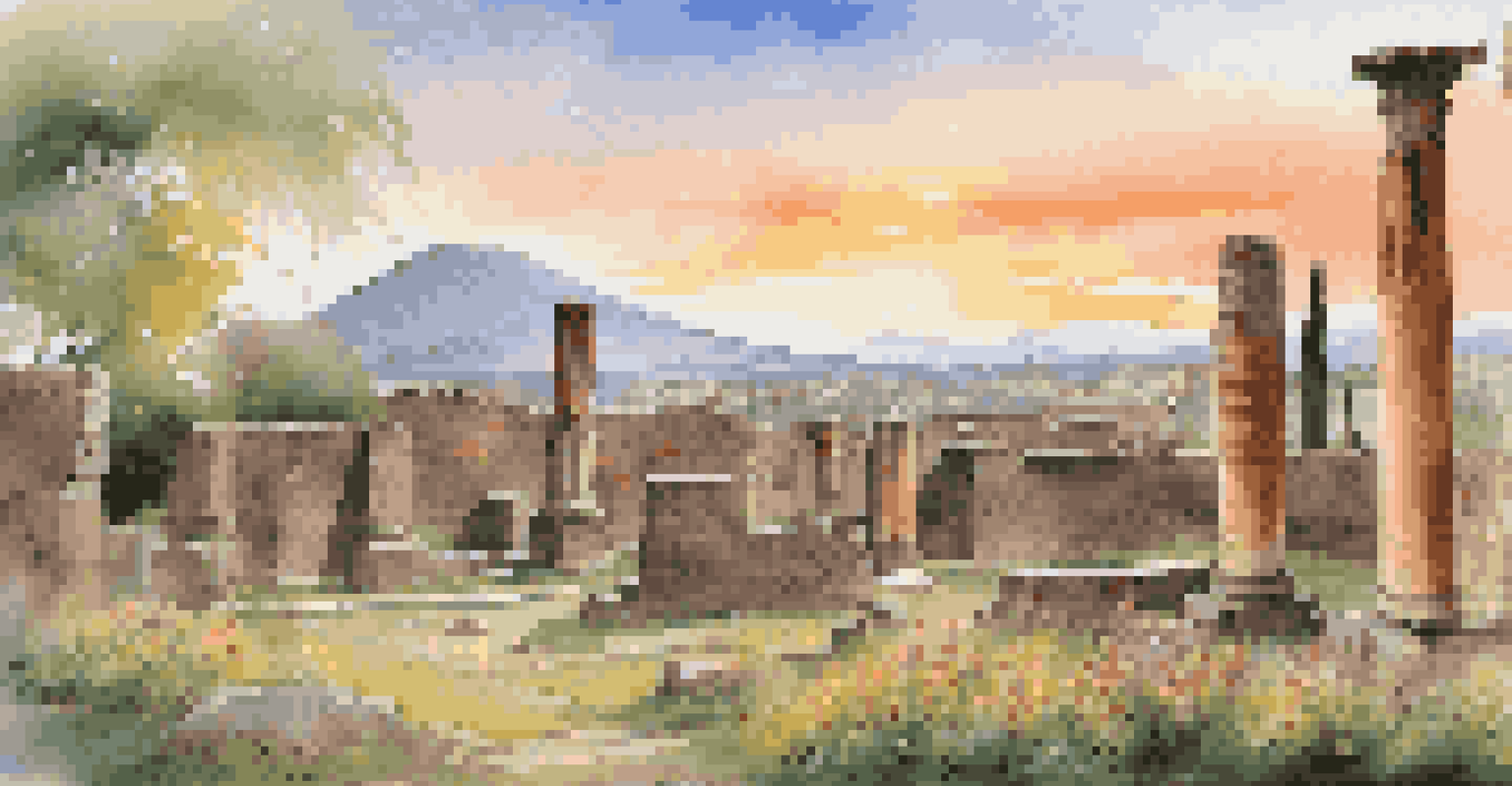Visiting UNESCO World Heritage Sites: Travel Tips

Understanding UNESCO World Heritage Sites and Their Importance
UNESCO World Heritage Sites are locations recognized for their cultural, historical, or scientific significance. These sites provide a glimpse into the rich tapestry of human history and natural wonders. By protecting these treasures, UNESCO ensures that future generations can appreciate their beauty and importance.
Heritage is our legacy from the past, what we live with today, and what we pass on to future generations.
Visiting these sites is not just about sightseeing; it's about understanding the stories and values they represent. Each site has its own unique background, and learning about it can enhance your travel experience immensely. For example, the Great Wall of China is not just a wall; it symbolizes the ingenuity and perseverance of ancient civilizations.
When you visit a UNESCO site, you're part of a global effort to preserve our shared heritage. This connection can lead to a deeper appreciation for the culture and history of the region you're exploring, making your travels more meaningful.
Planning Your Visit: Research and Preparation
Before setting off on your adventure, it's crucial to do your homework. Research the UNESCO sites you wish to visit, including their opening hours, entry fees, and any special events that might be happening. This information can save you time and enhance your experience.

Consider the best times to visit these sites. Some may be more crowded during peak tourist seasons, while others may have limited accessibility in certain weather conditions. A little planning can help you avoid the crowds and enjoy a more intimate experience with these incredible places.
Importance of UNESCO Sites
UNESCO World Heritage Sites protect cultural and historical treasures, enriching our understanding of human history.
Don't forget to check for any travel restrictions or guidelines, especially in the current global climate. Being well-prepared can make a significant difference to your trip, allowing you to focus on enjoying the wonders around you.
Packing Essentials for UNESCO Site Visits
Packing the right essentials can transform your visit to a UNESCO site from good to great. Comfortable footwear is key; many sites require a fair amount of walking, so sturdy shoes will keep your feet happy. Additionally, consider bringing a reusable water bottle to stay hydrated while exploring.
Travel is the only thing you buy that makes you richer.
Weather can be unpredictable, especially in outdoor locations; therefore, layers are your best friend. A lightweight rain jacket or a sun hat can make all the difference, ensuring you're prepared for any surprises Mother Nature throws your way.
Lastly, don't forget your camera or smartphone! Capturing the beauty of these sites is a must, but remember to be respectful and consider the rules around photography, especially in sacred or sensitive areas.
Respecting Local Cultures and Customs
Each UNESCO World Heritage Site is often deeply rooted in the local culture, so it's essential to approach your visit with respect and understanding. Familiarizing yourself with local customs can enhance your interactions and create a more enjoyable experience for everyone involved.
For instance, when visiting a historical site in a foreign country, be mindful of dress codes or traditions that may be observed. Showing respect for local practices not only enriches your visit but also fosters goodwill between visitors and locals.
Planning and Preparation Tips
Researching site details and travel guidelines can significantly enhance your visit and overall experience.
Engaging with local communities can provide insights that guidebooks often overlook. Consider joining guided tours led by local experts or participating in cultural activities to gain a deeper understanding of the site's significance.
Capturing Memories While Visiting UNESCO Sites
Photography can be a great way to capture the memories of your travels, but it's important to be mindful of your surroundings. Many UNESCO sites have restrictions on photography, especially in sacred areas or during certain events, so always check the rules before snapping away.
Consider taking the time to jot down your thoughts and feelings in a travel journal. Writing about your experiences can help you process your journey and create lasting memories that photographs alone might not convey.
Lastly, sharing your experiences on social media can inspire others to visit these incredible sites. Just remember to use your platform responsibly, promoting respect for the places you visit and the communities that inhabit them.
Sustainable Travel Practices at UNESCO Sites
As travelers, we have a responsibility to protect the places we visit. Practicing sustainable travel at UNESCO sites is crucial to preserving these treasures for future generations. Simple actions like sticking to marked paths and not littering can make a significant difference.
Supporting local businesses during your visit is another way to ensure your impact is positive. Whether dining at a local restaurant or purchasing handmade souvenirs, your choices can help sustain the community and its heritage.
Sustainable Travel Practices
Practicing sustainability, like supporting local businesses and respecting environments, is essential for preserving UNESCO sites.
Educating yourself about the environmental and social issues facing the sites can also enhance your travel experience. By understanding the challenges, you can be a more informed and responsible traveler, making choices that support conservation efforts.
Making the Most of Your Visit: Guided Tours vs. Solo Exploration
When it comes to exploring UNESCO World Heritage Sites, you have options. Guided tours can provide valuable insights and context that you might miss when exploring on your own. Knowledgeable guides often share stories and anecdotes that bring the site to life.
On the other hand, solo exploration allows for a more personal experience. You can take your time, wander at your own pace, and discover hidden gems that a group tour might overlook. This flexibility can lead to unexpected moments of joy and discovery.

Ultimately, the choice depends on your travel style and preferences. Consider mixing both approaches; perhaps start with a guided tour for an overview and then spend additional time exploring on your own.